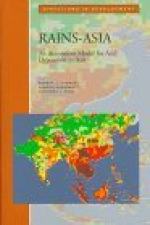|
This section contains 745 words (approx. 3 pages at 300 words per page) |

|
Acid rain is any form of atmospherically deposited acidic substance containing strong mineral acids of anthropogenic origin. It was reportedly first described in England by Robert Angus Smith in 1872. Acid rain is more properly called acidic deposition, which occurs in both wet and dry forms. Wet deposition usually exists in the form of rain, snow, or sleet but also may occur as fog, dew, or cloud water condensed on plants or the earth's surface. Dry deposition includes solid particles (aerosols) that fall to the earth's surface. Condensation of fog, dew, or cloud water is referred to as occult deposition.
The most common acidic substances are compounds containing hydrogen (H+), sulfates (SO = 4 ), and nitrates (NO 3 ). The chief source of these compounds is the combustion of fossil fuels such as coal, petroleum, and petroleum by-products, primarily gasoline. Agriculture is also a major source of nitrates. Power plants that...
|
This section contains 745 words (approx. 3 pages at 300 words per page) |

|


